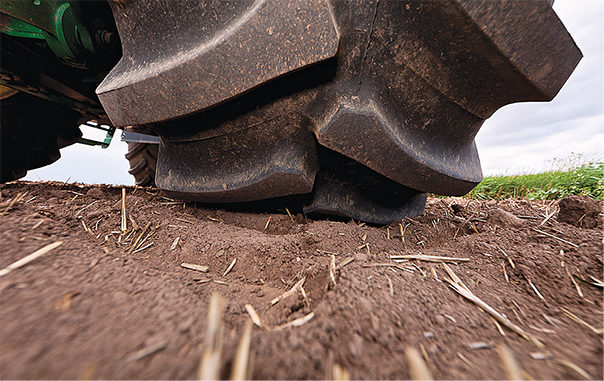No-Till Farmer
Get full access NOW to the most comprehensive, powerful and easy-to-use online resource for no-tillage practices. Just one good idea will pay for your subscription hundreds of times over.

As farms increase in size and no-tillers face pressure to be more efficient and productive, the size of farm equipment is bringing an ever-present danger of compaction.
And tractors aren’t the only threat any more. Larger no-till planters on the market today — some of them more than 100 feet wide with four-dozen rows across — are causing compaction, too. Some grain carts, slurry tankers, seed-tender equipment and combines are also giant-sized and may be running on classic bias tires at 50 to 60 psi or more.
Farmers must also understand the relationship between axle loads and performing field operations a proper tire pressures that don’t contribute to high ground pressure and compaction.
Conservation Tillage Guide asked tire manufacturers and researchers about new tire and tire-inflation technology available today, and for common-sense tips that could help no-tillers reduce or even avoid compaction in their fields.
Ken Brodbeck, OE/Export sales engineer for the ag division of Bridgestone Americas Tire Operations (Firestone), knows two Iowa farmers who took a combined $100,000 yield hit in 2010 due to stunted corn struggling to grow in compacted wheel tracks. Some of the ears pulled were one quarter of the average size.
The farmers confirmed the compaction problem by looking at yield maps from that year.
“There were red streaks every 90 feet — 3 sets of 12,” Brodbeck says. “Every set of wheel tracks across the entire field saw a hit on yields, and it was the wheels and tires that did…